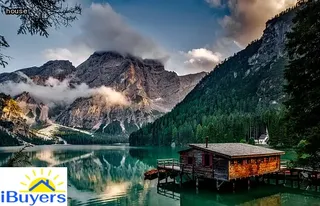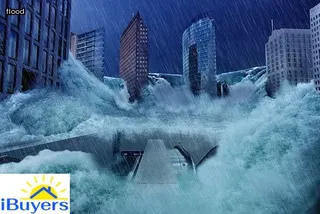Dehumidifiers are an invaluable tool when it comes to water mitigation and restoration. They help to reduce the moisture levels in an area, making it easier to dry out after flooding or other water damage.
By decreasing the humidity in a space, dehumidifiers can prevent mold growth and structural damage that can be caused by excessive moisture. Dehumidifiers also help reduce odors caused by moisture buildup.
This is especially helpful for homes or buildings that have been flooded. Additionally, dehumidifiers can make a home more comfortable as they pull excess moisture from the air and make it feel less stuffy and humid.
This makes them great for use in any environment where there is high humidity, such as in basements or other areas prone to flooding. Dehumidifiers provide many benefits for effective water mitigation and restoration, helping to keep your home safe from water damage and resulting structural issues.

Humidifiers are often used in water mitigation and restoration projects to help reduce the amount of moisture in the air. The benefits of using a humidifier can include improved air quality, reduced allergens, and increased comfort levels.
The downside of using a humidifier is that it can be costly to operate since they consume large amounts of energy. Additionally, improper use of a humidifier can lead to over-humidification which can cause issues such as mold growth.
Another disadvantage is that some models require frequent maintenance, including cleaning and filter changes. When deciding if a humidifier is right for your water mitigation and restoration project, it is important to consider both the pros and cons before making an investment.
Ventilation fans are essential pieces of water mitigation equipment used for effective restoration. These fans have the ability to expel any excess moisture and humidity from the air, as well as promote healthy airflow within the room.
Different types of ventilation fans are available in a variety of sizes and styles, each with its own unique features and abilities. Centrifugal blowers are designed to move large volumes of air over long distances, making them ideal for areas with high ceilings or those that require intense air circulation.
Axial flow fans also come in different shapes and sizes but they draw in more air than they push out, making them suitable for rooms with low ceilings or those needing a gentler air flow. Inline duct fans are often used to supplement existing heating, cooling, and ventilation systems installed in commercial properties, while ceiling mounted exhaust fans offer powerful suction capabilities and can be easily installed in residential homes.
Whether you’re looking for an efficient way to reduce dampness or trying to create a more comfortable indoor climate, the right type of ventilation fan can help you achieve your goal.

When installing a bathroom fan, it is important to take into account the size of the room and the type of fan that will be used. To ensure proper ventilation, it is essential to select a fan with an appropriate capacity for the space.
It is also important to consider how and where the fan will be mounted; many fans can be ceiling- or wall-mounted, depending on which is most suitable for the specific installation. Additionally, make sure that proper wiring and connections are in place before beginning installation.
Make sure any water mitigation equipment is securely connected, as moisture can damage electrical components if not properly sealed and insulated. Finally, check local building codes to ensure that your new fan meets applicable safety standards and requirements.
When restoring a property after water damage, one of the most important pieces of equipment to have on hand is a fan. Fans can help to quickly dry out affected areas and prevent mold growth by circulating air around the space.
The key is to use a fan that is designed specifically for water restoration, as these are made with durable materials and have higher CFM ratings than general fans. It's also important to place the fans in strategic locations throughout the area being restored: near windows, in doorways, and in other places where air can circulate freely.
Additionally, using multiple fans will help increase airflow and maximize drying power. Make sure to check the fan settings regularly to ensure that they are operating at optimal levels, as this will help expedite the drying process significantly.
Lastly, it's essential that all fans are properly grounded to avoid any potential electrical hazards. By following these best practices for using water restoration fans during clean-up projects, you can quickly restore your property back to its original condition.

When purchasing an air purifier, there are several factors to keep in mind. First, consider the size of the room that needs purifying and the type of filter needed for optimal filtration.
The size of the unit is important to determine how much area it can cover effectively. Additionally, a good air purifier should be able to remove allergens such as dust, pollen, pet dander and other particles from the air.
Furthermore, noise levels should be considered when choosing an air purifier; some machines make more noise than others, so if noise pollution is a concern look for one with a quiet operation function. Finally, look for an energy efficient model with a long-term warranty that will ensure its performance over time.
All these features should be taken into account when selecting an effective water mitigation equipment for your home or business.
Air purifiers are an essential piece of equipment for effective water damage restoration, as they are responsible for removing contaminants from the air. Cleaning and changing air filter elements is a vital part of maintaining the purifier’s efficiency.
Depending on the type of filter and the environment, it may need to be replaced or cleaned more often. The filters should be checked regularly to ensure they are functioning properly and that there is no build up of dust or debris which can reduce air flow and make it difficult for the unit to work efficiently.
Regular servicing of the filter will help to extend its life span and keep it running at optimal levels. The process involves removing the old filter element, cleaning it if necessary, and replacing it with a new one.
It is also important to check periodic tests to assess how effectively pollutants are being removed from the air by the purifier.

Testing indoor air quality with professional equipment is an essential task for any successful water mitigation and restoration project. Using the right equipment can help identify potential airborne contaminants and hazardous materials that may be present in the affected areas, helping to ensure safe conditions for those working on the restoration.
Professional quality air testing devices often feature advanced sensors and monitors that accurately detect the presence of various particles, toxins, chemicals, and other substances in the air. Having access to this data can help technicians make informed decisions about how best to manage air quality during a restoration effort, ultimately leading to more effective results.
Furthermore, it can also provide insight into potential sources of further contamination or health risks associated with working in certain areas. By utilizing professional-grade equipment for testing indoor air quality during a water mitigation and restoration project, professionals can gain a better understanding of their environment and work more effectively towards achieving successful results.
Using foggers, chemicals and disinfectants effectively can be a key element to successful water mitigation. Foggers are a tool used to atomize liquid into small droplets that are suspended in the air, which allows for the solution to reach even hard-to-reach areas of a space.
When combined with chemical solutions, foggers can help treat large areas quickly and efficiently. Disinfectants are also an important part of water mitigation as they have the ability to kill bacteria, fungi, viruses and other disease-causing organisms.
It’s important to understand how these products work and what type of application is necessary for effective results. Additionally, it's important to ensure proper safety precautions are taken when using foggers, chemicals or disinfectants in order to avoid any health risks associated with their use.
Knowing the right products to use and how best to apply them will go a long way towards ensuring effective water mitigation and restoration.

When selecting the right furnace filter for water mitigation, it is important to take into account a variety of factors. The size and type of filter needed should be determined by the size and type of furnace being used. It is also essential to consider the efficiency rating of the filter, as higher ratings reduce energy costs and help maintain air quality. Another important factor to consider is the MERV rating, which measures how well a filter can capture particles from
3 to 10 microns in size. Homeowners should also pay attention to the maximum pressure drop of the filter they choose, as this can affect how efficiently their furnace operates. Lastly, it is critical to select compatible filters that are designed for use with specific furnaces and that comply with any applicable codes or requirements. By taking all these factors into consideration, homeowners can ensure they are choosing the right furnace filter for their water mitigation needs.
When selecting a portable air conditioner for your home or business, it's important to consider the size of the space you need to cool and the type of unit that will best suit your needs. Portable air conditioners are designed to efficiently pull moisture out of the air, ensuring that water damage is not an issue in your environment.
Additionally, look for a unit with a long-term filter that can be changed regularly to ensure maximum efficiency and optimal air quality. A multi-speed fan can help provide more control over temperature levels while adjustable louvers allow you to direct airflow to specific areas of your space.
Finally, look for a unit with an automatic shutoff feature that turns off when desired temperatures are reached, helping conserve energy and protect against potential fire hazards.

Window air conditioners are a great way to help reduce the effects of high humidity and temperatures. They can be an effective part of a water mitigation strategy when used correctly. It is important to understand how these machines work and how to maintain them in order to maximize efficiency.
The key components of window air conditioners include the evaporator coil, condenser coils, fan blades, compressor, filter, drain pan and refrigerant lines. The evaporator coil is responsible for collecting moisture from the air while the condenser coils release heat outside the room. The fan blades move cool air throughout the room while the compressor pumps cooled refrigerant through the system.
The filter helps keep dust and dirt particles out of the system while the drain pan collects excess moisture that accumulates in the unit. Refrigerant lines connect different parts of the machine together and help regulate temperature changes. Regular maintenance such as cleaning or replacing filters, checking refrigerant levels and inspecting all components will ensure optimal performance from your window air conditioning unit.
Taking proper care of your unit increases energy efficiency, reduces energy costs and prevents water damage due to leaking refrigerants or clogged drain pans. Properly understanding window air conditioners is essential for effective water mitigation efforts as they provide a cost-effective solution for indoor cooling needs.
Thru-the-wall air conditioners are an excellent way to help mitigate water damage during a restoration. The benefit of these units is that they can be installed directly in the wall, making them far more efficient than window units.
Additionally, thru-the-wall air conditioners tend to be much quieter and offer a more aesthetically pleasing look compared to traditional window units. Furthermore, these units tend to be much more energy efficient, reducing your energy costs over time.
Another advantage of thru-the-wall air conditioners is their ability to cool larger areas of space than window units, making them ideal for large rooms or open floor plans where multiple rooms can benefit from the same unit. Finally, these types of air conditioners are built for long term use and longevity, meaning you won't have to worry about replacing them as often as you would with window units.
All these benefits combined make thru-the-wall air conditioners an ideal choice when looking for essential water mitigation equipment for effective restoration.
No, water extraction and water mitigation are two separate services that achieve different results. Water extraction is the process of removing excess water from a flooded space, while water mitigation involves taking proactive measures to prevent future damage.
Essential water mitigation equipment such as dehumidifiers and air movers can help to effectively restore a property after a flood or other water-related incident. Dehumidifiers work by removing moisture from the air while air movers circulate the air to speed up the drying process.
These pieces of equipment are essential for preventing mold growth and structural damage after excess moisture has been removed. Additionally, it’s important to note that not all water removal services offer comprehensive water mitigation services as well, so if you need both, it’s important to research your options carefully before you hire a contractor.

Mitigation is a process used to reduce the impacts of natural disasters such as floods, hurricanes, and other extreme weather events. It involves the use of various strategies to limit the amount of damage caused by these events.
Water mitigation is a type of mitigation specifically designed to protect against water-related damage. This includes the use of equipment that can help contain and divert water away from vulnerable areas, as well as techniques that allow for faster water removal.
Essential water mitigation equipment includes pumps, hoses, and other tools that are used to quickly remove standing water from flooded areas. This equipment can be used to effectively restore damaged property and limit further destruction by preventing additional moisture buildup in walls and other materials.
Properly using this equipment can significantly reduce restoration costs after a major flood or storm event.
When it comes to drying up water, there are a few essential pieces of water mitigation equipment that can make the job far more effective and efficient. A wet/dry vacuum is one of the most important tools for any water cleanup and restoration project; this device can quickly suck up large amounts of standing water from carpets and other surfaces.
A dehumidifier is also an invaluable piece of equipment; it helps reduce humidity levels in affected areas, which in turn will help speed up the drying process. Air movers are another essential tool that should be used in any water damage situation; these devices increase air flow, helping to circulate the air around a room and promote faster evaporation.
Finally, you may want to consider using fans or open windows to allow for further air circulation and ventilation. By utilizing these pieces of essential water mitigation equipment, you can be sure that your restoration efforts will be successful.
A: The most common type of water mitigation equipment is a wet/dry vacuum.
A: Water mitigation requires the use of a moisture meter to detect and measure moisture levels, a dehumidifier to remove excess moisture from the air, an air mover to circulate air around the affected area and an extractor to remove standing water.
A: A water pump is a device that moves liquid from one place to another. It is used in water mitigation to remove excess or contaminated water from an area, such as flood-damaged homes and businesses.